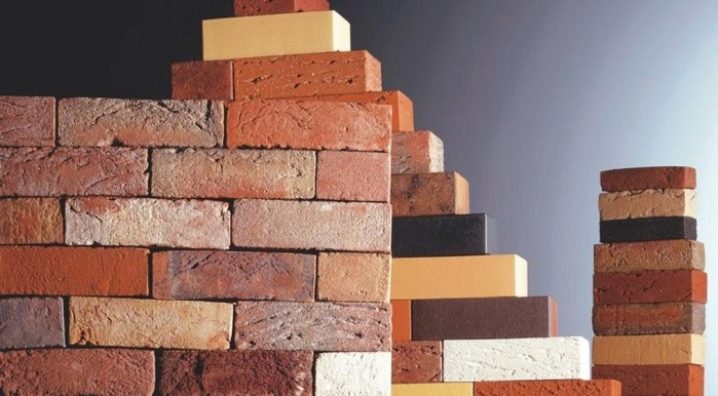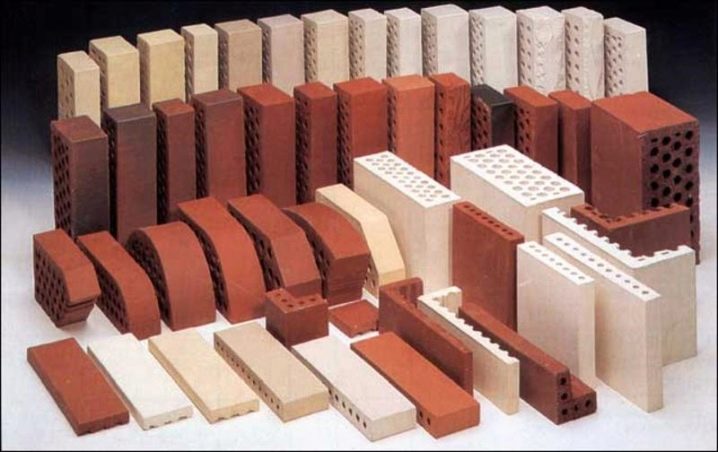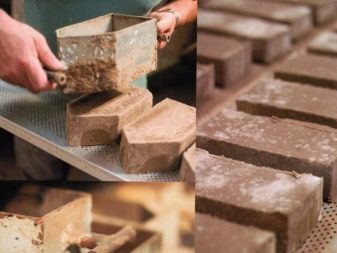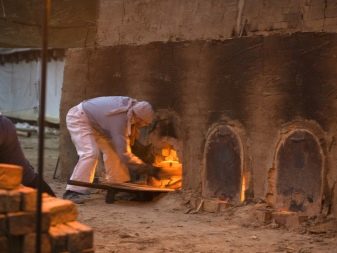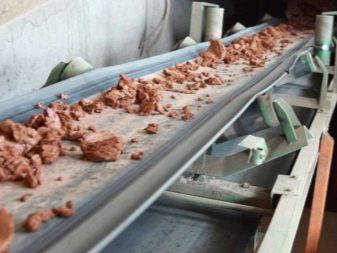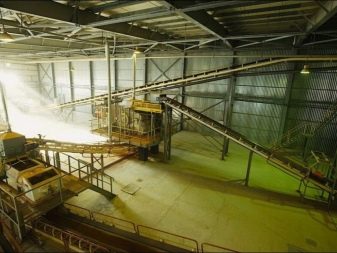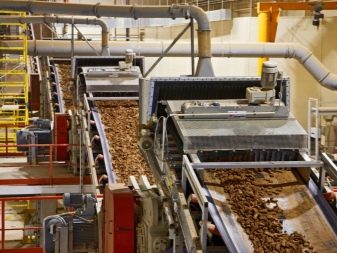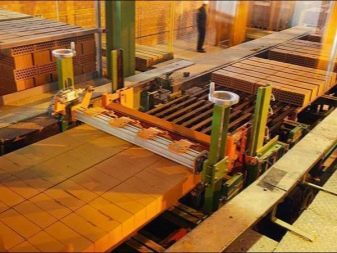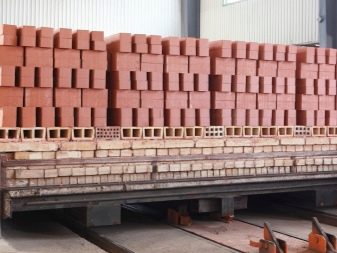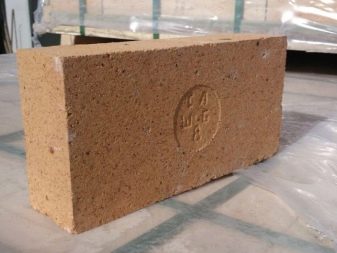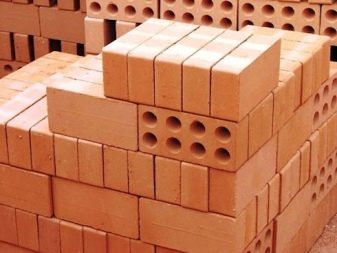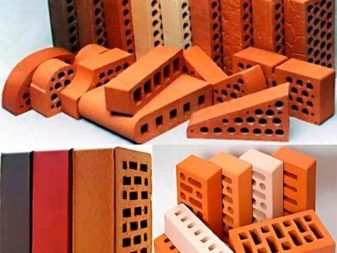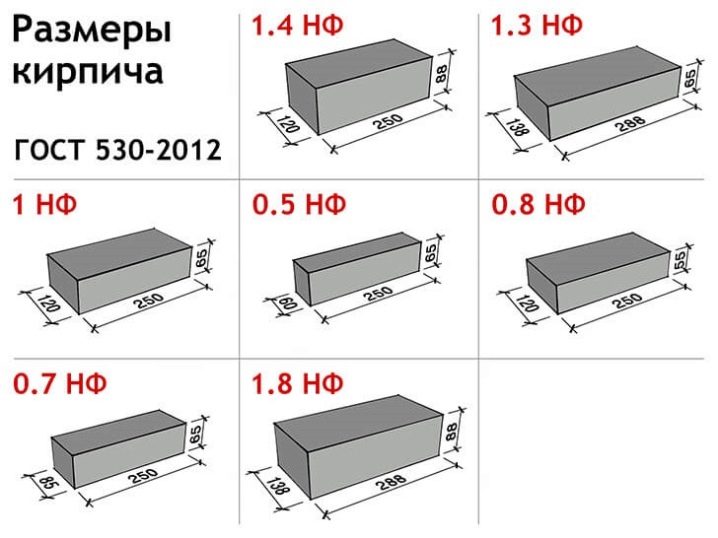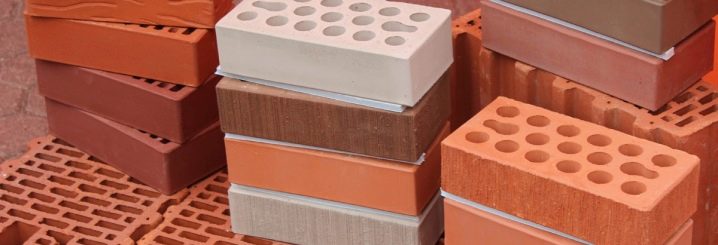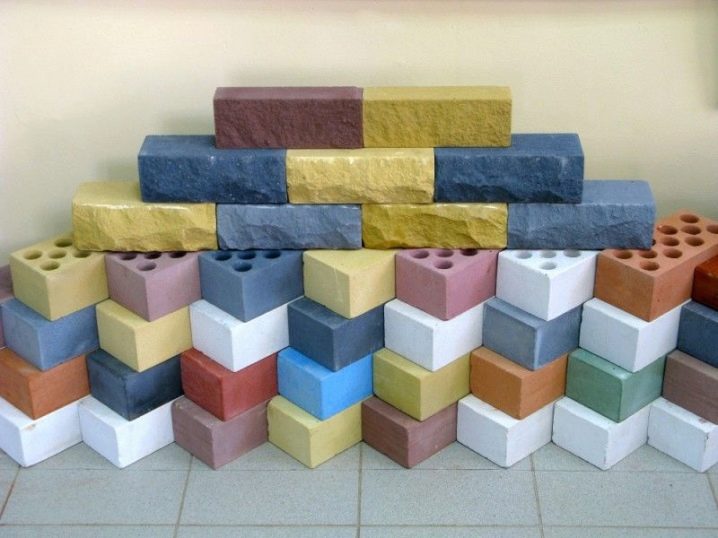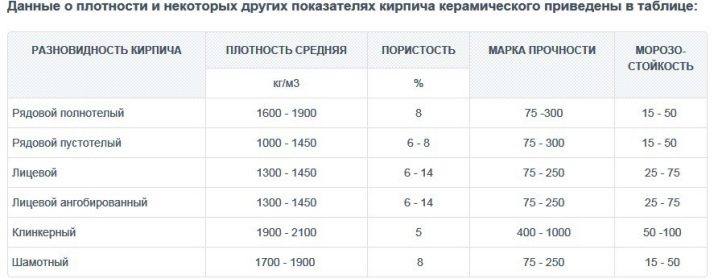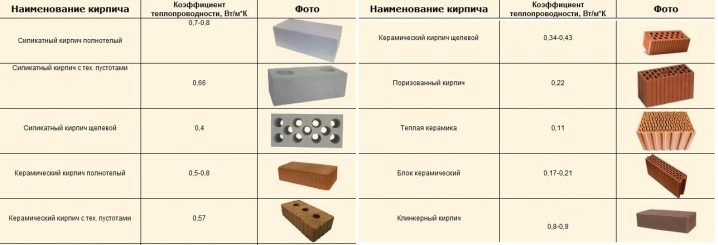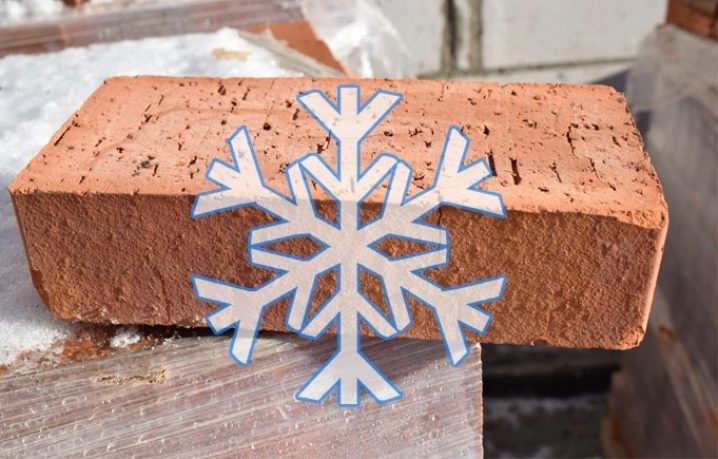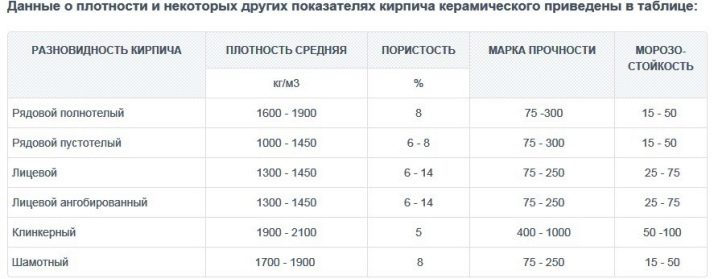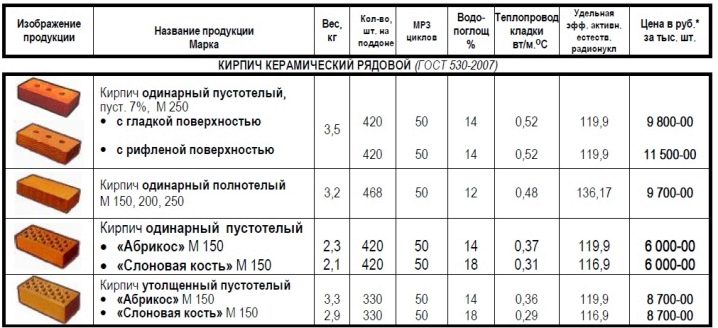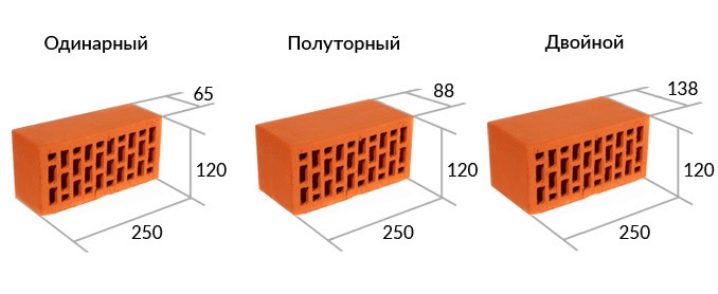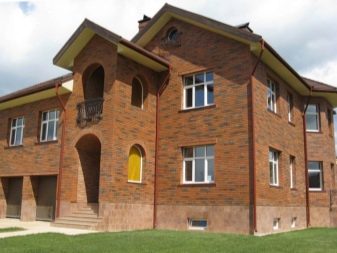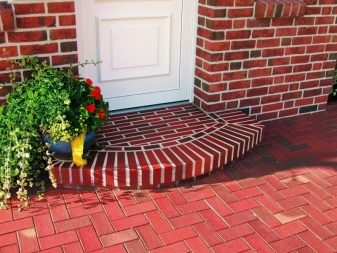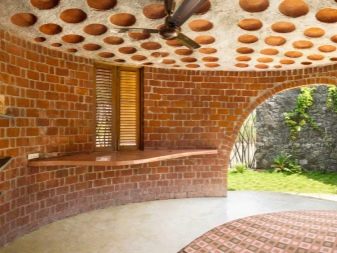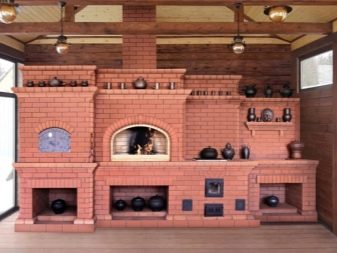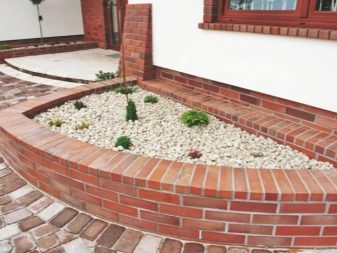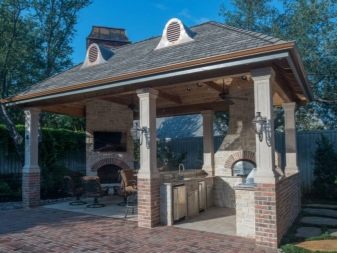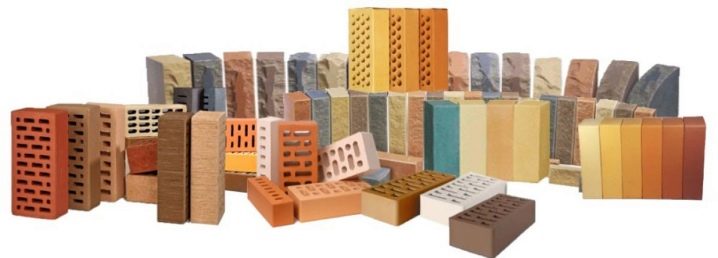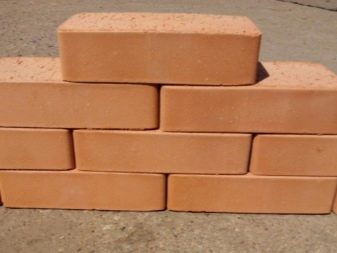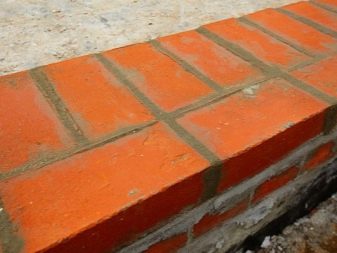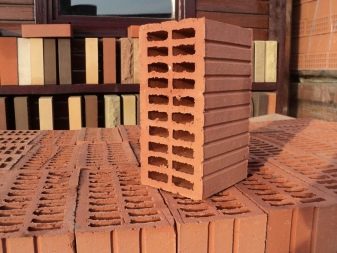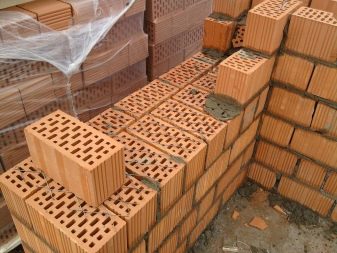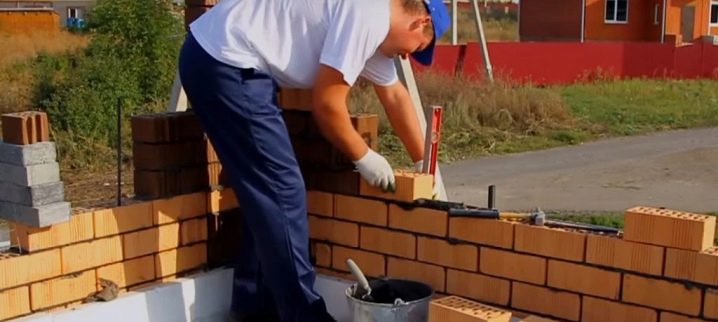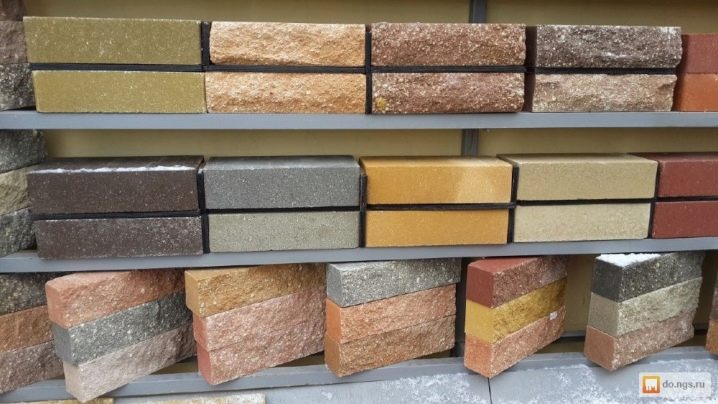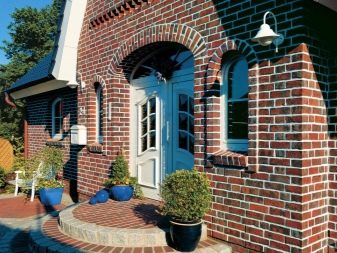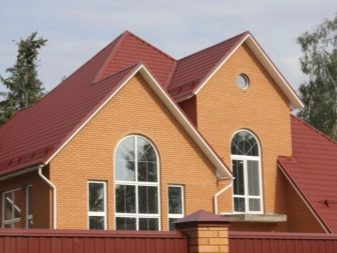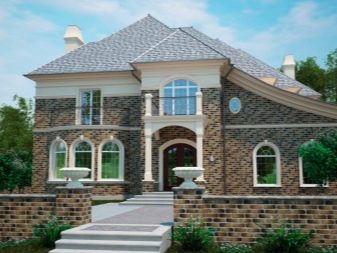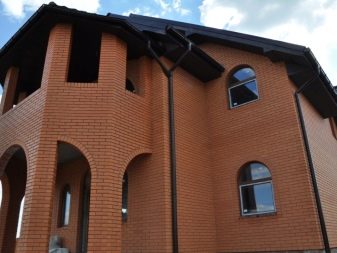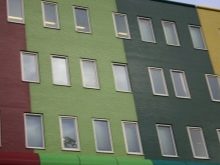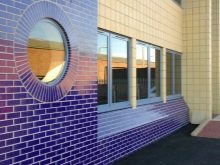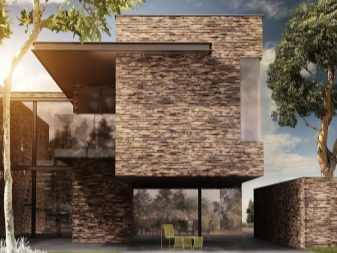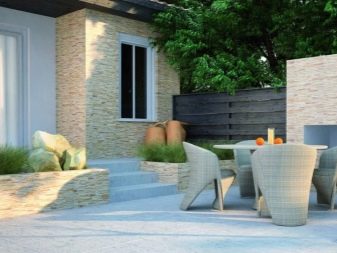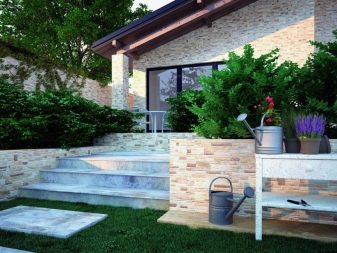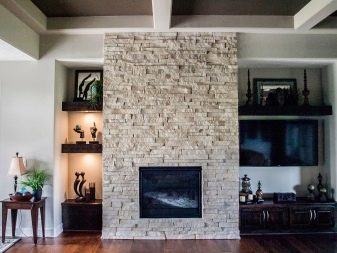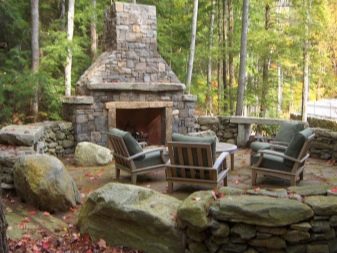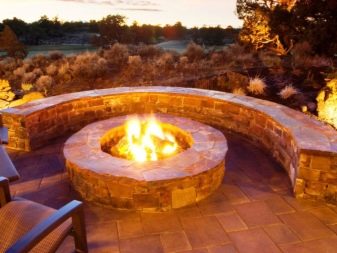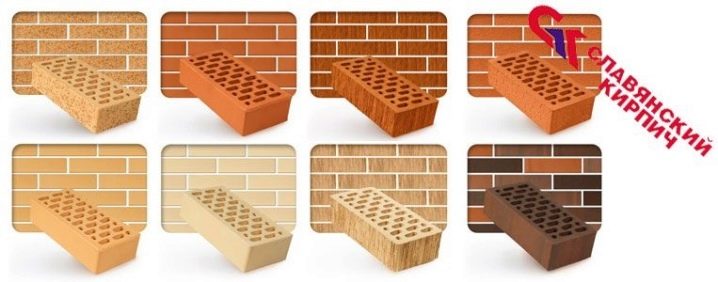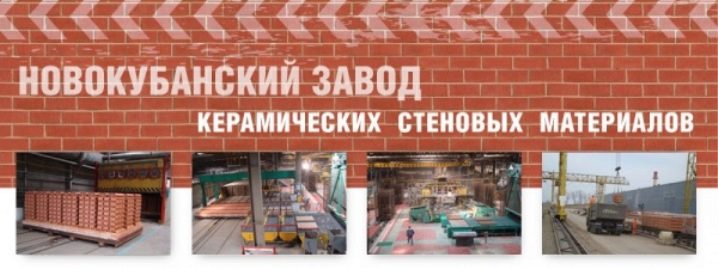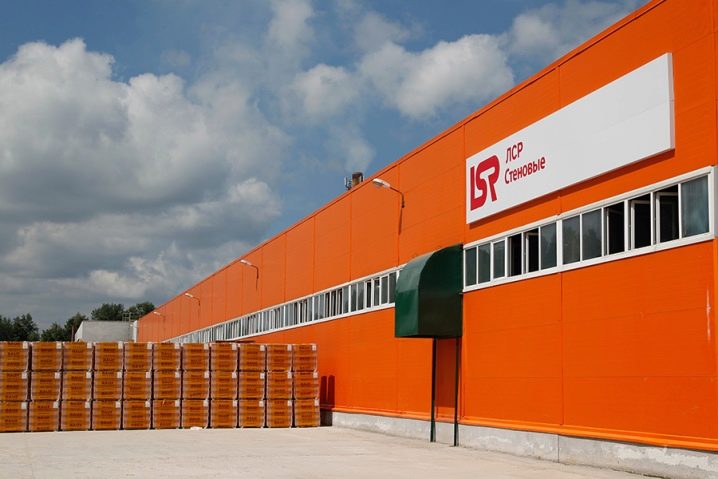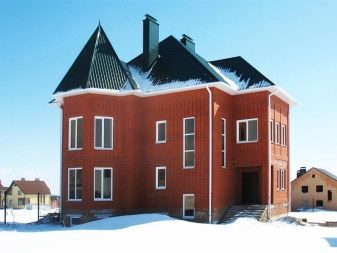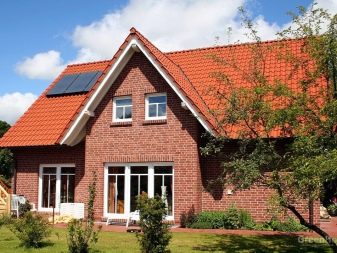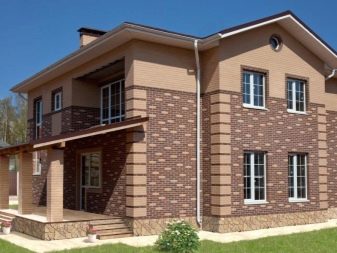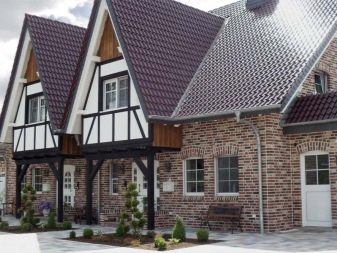Ceramic brick: properties and varieties
Ceramic brick is one of the most common building materials and is widely used for the construction of foundations, cladding of buildings, masonry capital walls, interior partitions and furnaces. Due to its universal form and high performance characteristics, the structures erected from it are particularly robust and have a long service life.
What it is?
Ceramic brick is a building material, which is made of red clay by molding and firing. The brick was invented a long time ago, but its production technology and composition did not undergo any significant changes.Previously, the process of making ceramic bricks was complicated and time consuming. The clay was thoroughly kneaded, then the blanks of the desired shape were manually formed, put out to dry in the sun, and only after the brick had hardened, was it sent for firing at the stove. They were engaged in brick production especially in the summer period, since it was practically impossible to dry the workpieces in the low temperature and high humidity conditions typical for the winter and autumn periods. This continued until the second half of the 19th century, until the first kilns and dryers were invented in Europe.
Today, the production process of ceramic bricks is fully automated. and year-round carried out on numerous enterprises. For the manufacture of material used in two ways. The first is called semi-dry pressing and consists in the formation of raw material from clay of low humidity. The process takes place under a sufficiently high pressure, which allows for quick setting of the raw material and to obtain a material of high density and hardness. The advantages of this technology are fast manufacturing and ease of production mechanisms.The main disadvantage of the method is the inability to use the material for the construction of buildings that will be exposed to high humidity. It is because of the low performance of such a brick is used little and the volume of its production is rather low.
The second method is called plastic molding. and consists in squeezing out clay from a belt press, followed by drying and baking the blanks at a temperature of 1000 degrees. At the same time, the moisture content of the clay reaches 35%, while with semi-dry pressing this figure barely reaches 10%. This method is used to make the bulk of ceramic bricks used in all areas of construction. The advantages of the method include the possibility of producing bricks of different shapes and sizes, which allows forming hollow sections in blanks, changing the operating characteristics of the material. The minus is the high cost of equipment and, in comparison with the first method, a slightly increased time for the production of bricks.
After production, each batch of ceramic bricks is tested.To do this, take several copies and check them for water absorption, compression and impact resistance. Check is made on the specialized equipment with use of a multi-ton press. According to the test results, the products are certified in accordance with the strict requirements of GOST with the assignment of the corresponding classes of frost resistance (F) and strength (M). However, in addition to the letter symbol, the marking of a brick includes numbers. Thus, the figure located behind the F icon indicates how many freeze-thaw cycles can withstand a brick without losing the basic operational characteristics.
The figure following the "M" indicates the maximum load per 1 cm2 of brick area. Due to the fact that all tests are performed according to a single standard, the certified bricks of different batches can differ from each other only very slightly. This allows you to classify copies according to the form of execution and size, considering the products belonging to a particular category, are conventionally the same. The scope of application of ceramic bricks is quite wide.In addition to construction, the material is successfully used in the construction of fireplaces, fences, columns and stairs, as well as the restoration of facades and interiors.
Specifications
Production of ceramic bricks is made according to the current GOST 530 2012, which guarantees high performance of the material and allows its use as the main building material in the construction of multi-storey buildings and industrial buildings. In accordance with this standard, ordinary ceramic brick has a standard red-brown color, while the color range of facing models includes all shades and depends on the quality of clay, the presence of various additives, additives, special dyes and the addition of glaze.
The main technical characteristics of ceramic bricks are indicators of density, porosity, frost resistance, strength, water absorption and thermal conductivity.
Water absorption is the ability of a material to absorb and retain moisture. To determine this indicator, a dry brick is weighed, and then placed in a container with water and left for 38 hours,after which they take out and re-weigh. “Unnecessary” grams will denote moisture absorbed by the material. Then, the resulting value is converted to a percentage of the total mass of dry brick and get the rate of moisture absorption. According to the requirements of GOST, the proportion of moisture to dry weight should not exceed 8% for solid bricks and 6% for hollow bricks.
Thermal conductivity of ceramic bricks refers to the ability of a material to conduct a certain amount of heat through a square meter per unit of time. The lower this figure, the better the heat is stored indoors during the winter period and the less hot air gets into it during the summer months.
The strength of the ceramic material shows its ability to withstand mechanical and shock loads and is determined by the limit of internal stress in the process of testing the compression, bending and tension of the material. The most durable brands of ceramic bricks are modifications M200, M250 and M300.
The density of a brick is the mass of a material that is in one cubic meter. This value is inversely proportional to the porosity values and is considered one of the most important characteristics of thermal conductivity of bricks.Density is not a constant indicator for all types of ceramic stone and varies from 1000 kg / m3 for hollow models to 2100 kg / m3 for clinker ones.
Porosity shows the degree of filling of the brick structure with pores in percentage terms and has a direct impact on the strength, thermal conductivity and cold resistance of the material. To increase the pore formation, the clay composition is mixed with sawdust, peat, coal, and crushed straw — that is, materials that completely burn out during firing and leave numerous small voids instead. The porosity, like the density, is not constant for different types of bricks, and in clinker products it can reach its minimum value of 5%, while in facing specimens it is 14%.
Frost resistance is indicated by the symbol F and shows how many freeze-thaw cycles are able to transfer the material before the start of destruction. Thus, the index of clinker models ranges from F50 to F100, which indicates the ability of this type of ceramic brick to serve 50 or 100 years. For facing models, this indicator ranges from 25 to 75, and for masonry solid and hollow specimens is limited to values of 15-50 years.
Weight
The mass of brick is an important indicator and is taken into account when calculating the load on the foundation, when determining the carrying capacity of vehicles intended for its transportation, as well as when choosing a crane brand and storage conditions. The mass of ceramic brick depends entirely on its porosity, density, size and the presence of cavities. Thus, a single ceramic brick will weigh from 3.3 to 3.6 kg / piece in a solid version, and from 2.3 to 2.5 kg in a hollow core. One-and-a-half models weigh a little more: the mass of hollow is 3-3.3 kg, and full-bodied - from 4 to 4.3 kg.
To simplify the calculation of the weight difference of the full-bodied and hollow types, you can use average weights and assume that the weight of a solid brick with a hollowness of up to 13% is 4 kg, while the conventional weight of a hollow brick with a hollowness exceeding 15% is 2.5 kg. However, these calculations are valid for one of the most common and running stone sizes - 250x120x65 mm.
Knowledge of the mass of one brick allows calculating the weight of a pallet or a cubic meter of masonry to the nearest kilogram. So, 1 cu. m of masonry, consisting of 500 solid bricks, will weigh from 1690 to 1847 kg.In addition, when calculating the number of stones in a cubic meter, you need to know that it contains seven rows of double bricks (200-240 pieces), ten rows of thickened one and a half (380 pieces) and 13 rows of single.
And, for example, hollow bricks with dimensions of 250x85x65 mm weigh already 1.7 kg, while the dimensional specimen of 250x120x88 mm draws 3.1 kg.
The size
In accordance with current standards of GOST, brick brick factories produce three standard sizes of ceramic bricks: single, one and a half and double. Each instance has a regular geometric shape, straight edges and a flat surface of the faces. The most common is a single stone (NF) with dimensions of 250x120x65 mm. The dimensions of the one-and-a-half articles (1.4NF) are 250x120x88 mm, and the double (2.1NF) sizes reach 250x120x140 mm. In addition to running gears, there are rarely found sizes, such as in eurobirds (0.7NF) and modular copies (1.3NF). The first dimensions are only 250x85x65 mm, while the second ones are represented by long models measuring 288x138x65 mm.
Russian GOST allowed the release of incomplete models with a length of 180, 120 and even 60 mm, as well as the production of fittings, different non-standard forms.However, these standards are used only in Russian brick factories and are regulated by domestic standards. Foreign analogues are made according to somewhat different requirements and have dimensions of 240x115x71 and 200x100x65 mm. Therefore, when purchasing a material, it is necessary to take into account this moment and pay attention to the country of origin of these products.
Advantages and disadvantages
High consumer demand and large The popularity of ceramic bricks is due to a number of important advantages of this material.
- High strength and frost resistance indicators make it possible to use bricks as the main building material in the construction of buildings in any climatic zone.
- Excellent sound insulation properties make brick an indispensable material for the construction of interroom partitions in the construction of apartment buildings.
- Low water absorption, not exceeding 14%, does not allow the structure to absorb excess moisture and allows it to dry quickly after rain.
- Full environmental safety of the material, due to the natural origin of clay, allows for the use of bricks in the construction of fireplaces and carrying out internal finishingworks
- The high thermal stability of the products allows them to be used in the construction of furnaces and the construction of chimneys.
- Excellent decorative qualities provide ample opportunities for the use of ceramic bricks in the implementation of bold design projects.
The disadvantages of the material include the high cost, which causes a noticeable increase in the cost of the built housing, as well as the probability of the formation of white stains - efflorescence.
Kinds
Classification of ceramic bricks occurs according to several criteria, the fundamental of which is the functional purpose of the material. On this basis, four large groups are distinguished, each of which possesses only its inherent qualities and operational characteristics.
Private
This type of material is the most widespread and is used when performing laying simple type in the construction of buildings and structures. Ordinary brick, in turn, is further subdivided into two types, and can be hollow and full-bodied.
Full-body models are used in cases where the erected structure will be subjected to constant mechanical, shock or weight loads. The material is widely used in the construction of bearing columns, walls and pillars. For such structures, it is better to choose the brands M250 and M300, which have maximum strength and durability. However, when using a corpulent material, it should be borne in mind that the thermal insulation characteristics of the erected structure will be significantly reduced. This point should always be taken into account and take additional measures to preserve heat indoors. The average density of solid brick varies from 1600 to 1900 kg / m3, the porosity is 8%, and the thermal conductivity varies in the range of 0.6-0.7 conventional units. Solid brick is able to endure up to 75 freeze-thaw cycles, therefore it can be used for the construction of fences, external stairs and walls.
Porous hollow brick is intended for the construction of low-rise residential buildings, the walls of which will not be subjected to serious weight loads. In addition, hollow material is often used as a filling element in frame-monolithic apartment buildings and in the construction of interior partitions.In the latter case, the use of less durable material with indices M100 and M150 is allowed. The voids inside the brick can be placed both vertically and horizontally, however, it should be borne in mind that horizontally directed cavities significantly reduce the overall strength of the structure. The number of voids in a hollow brick can reach 13% of the total volume, which makes the production of material economically profitable and considerably cheapens the cost of the objects being built. In addition, due to the high thermal insulation properties due to the presence of internal cavities, houses built from hollow bricks are very warm.
The density of such material ranges from 1000 to 1450 kg / m3, the average porosity is 7%, and the thermal conductivity varies from 0.3 to 0.5 conventional units. The configuration and depth of cavities in a brick can be different. Holes can have both end-to-end and one-sided execution, and the shape of their cross section can be round, square and rectangular. When using a hollow brick, an important condition for successful construction is the ability of the bricklayer to perform laying in such a way that the cement mortar does not fall into the cavities and does not squeeze out all the air from there.Otherwise, the hollow brick will lose its main purpose in preserving the air gap inside the masonry and will not be able to provide the necessary insulation of the room.
Facing
This type of brick is called the front or front. The main purpose of the material is exterior cladding and restoration of buildings. The brick has a high density, reaching 1450 kg / m3, porosity of 14% and thermal conductivity up to 0.5 units. The material is produced in a wide range of colors and is characterized by uniform staining, no defects, beautiful surface and accurate forms of bricks. For the most part, facing stone is produced in hollow version, which allows simultaneously with finishing additional insulation of rooms and reduces the cost of facing.
Facing bricks are produced in five versions: regular, textured, shaped, glazed and angobed.
- Ordinary brick It has a smooth exterior surface and is produced in a wide variety of colors and shades. The advantages of this type is the durability of the lining and the absence of the need for frequent repairs.The disadvantages include the high cost of the material, which, when facing large areas, has a noticeable effect on the budget.
- Textured brick It is used for exterior and interior decoration of rooms and is distinguished by the presence of a relief texture imitating a pattern of wood fibers or natural stone, as well as depicting geometric patterns, symbols and patterns. In the manufacture of textured bricks, shotcrete is widely used, the essence of which is to apply a decorative layer under high pressure with an image already present on it.
- Figured or profile brick It is a material of non-standard configuration and is used in the design of rounding on columns, arches and other architectural forms.
- Angobirovanny brick presented in the form of a two-layer colored artificial stone with a smooth surface. The technology of engobing involves applying a layer of white clay to the dried raw material, followed by firing. And the clay is pre-painted in different colors with the help of special dyes and pigments. This material looks very good in the interior and is often used in the decoration of hallways, corridors and public spaces.
- Glazed brick produced by applying a special glaze consisting of low-melting glass. As a result of the application of the vitreous waterproof coating, the frost resistance and moisture resistance of the ceramic lining are significantly increased. At the production stage, various dyes are added to the glaze, with the result that the surface of the brick acquires a deep color and a brilliant transparent texture.
Clinker
The clinker stone is used for facing basements and facades of buildings, in the construction of floors in industrial workshops, as well as in paving roads, bridges and sidewalks. The brick is characterized by high strength and long service life, due to the technology of manufacturing clinker models. The fact is that for their production a special kind of refractory clay is used, which is fired at higher temperatures than in products made according to traditional technology. This is both a plus and a minus of clinker bricks. The advantage is the highest strength, corresponding to the indices M400-M1000, and excellent frost resistance, allowing the stones to withstand from 50 to 100 cycles of freezing and thawing.The disadvantages include too much material cost and high thermal conductivity due to the increased density of the raw materials.
Refractory
The material owes its high refractory properties to chamotte clay, which makes up to 70% of the total mass of bricks. This type of clay can easily withstand temperatures of 1600 degrees, while maintaining the operational properties and integrity of the forms. Refractory brick has found wide application in the construction of fireplaces and stoves, and therefore began to be produced in unconventional forms, designed for use in stoves. So, in addition to the standard forms, there are wedge-shaped, arched and trapezoidal configurations in the assortment that perfectly fit into the stove and fireplace designs.
Top manufacturers
Many enterprises are engaged in the production of ceramic bricks in Russia, but some of them want to be singled out separately.
Ceramic factory from the city of Golitsyno It is the most powerful brick manufacturing enterprise in our country; it produces about 120 million units per year. The specialists of the plant have established a thorough control over the quality of the products, carried out at each stage of production.This allows you to track and promptly remove defective items and deliver to the market only high-quality materials. Production is carried out on the latest foreign equipment using the latest developments and modern technologies. The range of the company is represented by a large number of corpulent and hollow stones, as well as many varieties of facing bricks.
Enterprise "Slavic brick" It has a powerful production base and produces up to 140 million units per year. The company has been operating for 20 years, during which it has accumulated vast experience in the production of building materials and reached the European level. The company was built according to the project of Hans Lingl from Germany and today is the most modern brick factory in Russia. A large number of various types of ceramic stone, including both ordinary red blocks and decorative facing models, are coming off the production line of the enterprise.
Products "Novokubansk plant of ceramic wall materials" also well known in our country.The company has its own resource base and controls the quality of its products, starting with the procurement of raw materials. The annual capacity of the company is 70 million units per year.
Association "Wall materials" It includes several enterprises located in Moscow and Leningrad regions, the total productivity of which reaches 450,000,000 units per year. Today the company offers the widest range of ceramic building materials in Russia and is one of the leaders in the production of ceramic stone in the post-Soviet space.
How to choose?
The main criteria for choosing a brick are its technical characteristics and quality. To determine the properties of the material, it is necessary to familiarize yourself with the labeling of products and to study the accompanying documentation. It is much more difficult to determine the quality of products, and since the overall strength of the erected structure and its performance properties depend on this factor, it is impossible to err here.
So, when buying, it is recommended to take a few bricks from the pallet and knock on them with the trowel handle. If the product is of high quality, then the sound produced will be long, resonant and slightly metallic, and vice versa, if there is a marriage or the quality of the brick is poor, the sound will be short and deaf.If at least one of the tested bricks made a deaf sound, it is better to refuse to buy this batch. You can check the brick in a more radical way. To do this, it is necessary to split it with a hammer, and if the material is of high quality, the brick will split into several large parts, and if the quality of the material is low, it will crumble to dust.
Buying a brick is quite a serious matter, so its choice should be taken with all responsibility.
Tips for laying brick stoves and fireplaces in the video below.
